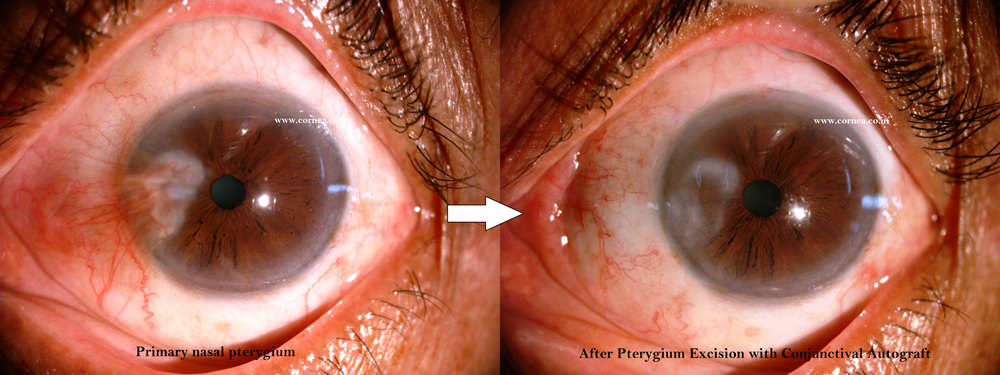1. What is Pterygium? (pronounced as “TE-RI-GI-UM”)
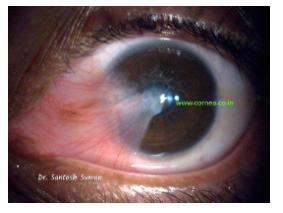 Pterygium is a triangular shaped lump of tissue, which grows from the conjunctiva (the thin membrane that covers the white of the eye) onto the cornea. A pterygium can occur in both eyes, usually on the nasal side of the eye.
Pterygium is a triangular shaped lump of tissue, which grows from the conjunctiva (the thin membrane that covers the white of the eye) onto the cornea. A pterygium can occur in both eyes, usually on the nasal side of the eye.
2. What causes a pterygium ?
It is not completely known what causes a pterygium, but most likely it is the combination of genetic predisposition and UV light exposure from sunlight.
3. Should I get my pterygium surgery done?
A pterygium should be removed if it is large and near the central cornea, if it is continually causing irritation or if it is cosmetically unacceptable.
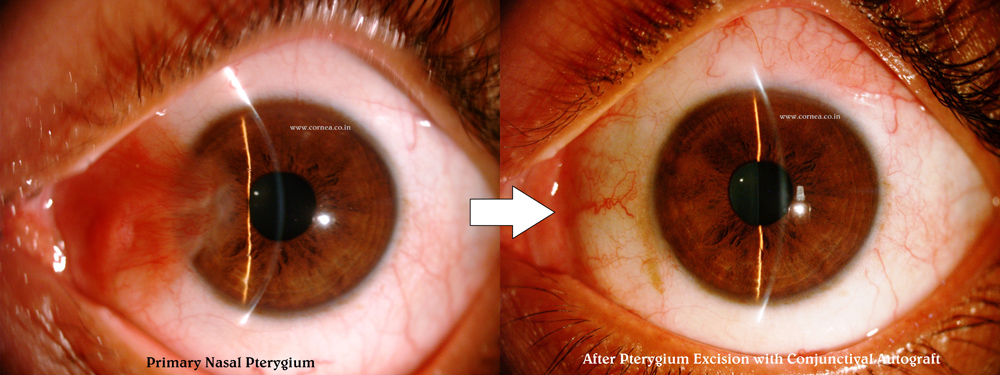
4. What is involved in removing a pterygium?
Pterygium is surgically removed and a conjunctival autograft (CAG) is used to cover the raw area over bare sclera which reduces the risk of recurrence.

5. Is the surgery risky?
No, the surgery is quit.
6. Can my pterygium come back after surgery?
Pterygium surgery with conjunctival autograft reduces the chance of recurrence significantly. Recurrence can rates are less than 5% safe.
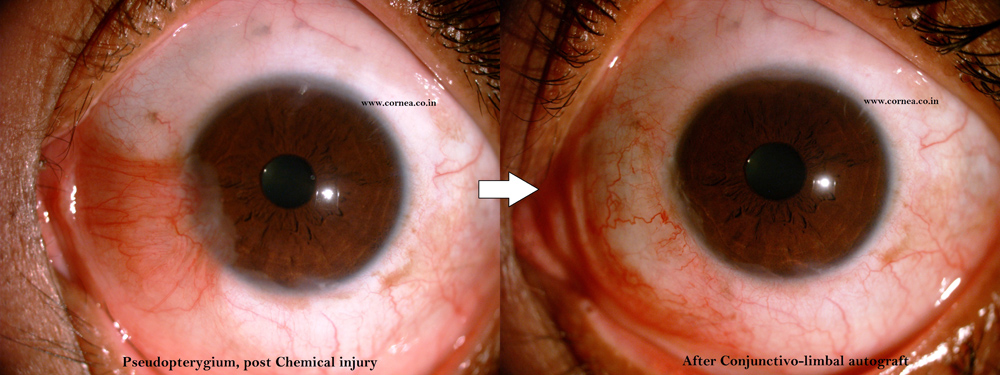
7. Is surgery painful ?
The surgery is done under local anaesthesia, There may be some pain on following day which can be controlled with medications.
8. Do I need to get admitted for surgery ?
No, it is done as “Day Care” procedure and doesn’t need admission.
9. Are there any restrictions after pterygium surgery?
Not much ! You have to avoid rubbing your eye. Avoid exposure to dust or dirty water into the eye for a week after surgery.
10. Will there be stitch in my eyes during pterygium surgery?
Surgery can be done with stitch or without stitch. For stitchless surgery, ‘glue’ is used to keep the autograft stuck to its place. Temporal pterygium usually need stitch.
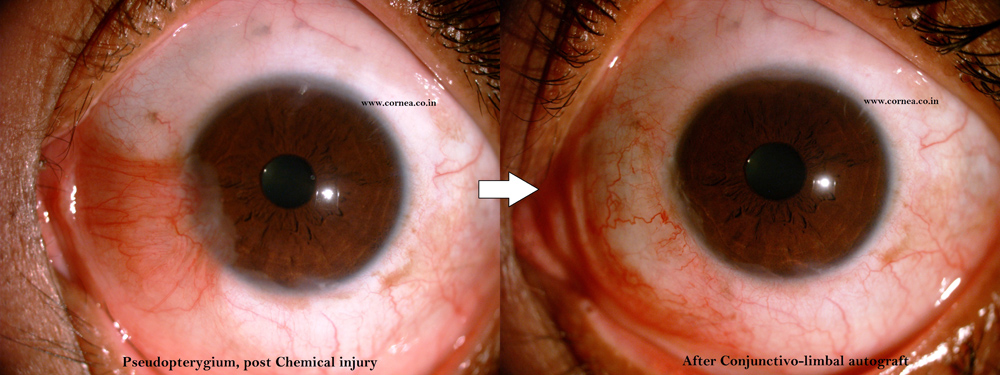
11. Will there be bandage after surgery?
Yes. Bandage is preferably kept for one night. This will avoid dislodgement of autograft.
12. What if I delay my Pterygium surgery?
Delay in pterygium can allow it to grow deeper as well as towards the center of cornea. In such cases, despite surgery some residual scar tissue is left behind (as shown in the picture below).
